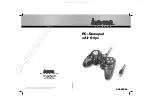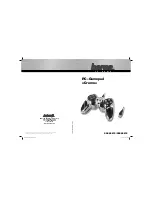
CIPer
TM
MODEL 50 CONTROLLER
–
INSTALLATION AND COMMISSIONING INSTRUCTIONS
59
31-00233-02
Example: CIPer Model 50 Modbus Master Controller and Connected Modbus Slaves (with inserted
termination resistor)
Figure 50: Connection of an CIPer Model 50 Modbus master controller via its RS485-1 interface to a
Modbus with slaves
The termination resistor must be inserted directly into the terminals of the last Modbus slave.
NOTE
In this example, any or all of the Modbus RTU slaves depicted here can be CIPer Model 50
Modbus RTU slaves. In such cases, an CIPer Model 50 Modbus RTU slave positioned at the
end of the Modbus (as "Modbus Module #N") must have its 3-position slide switches set to
"End" (see Figure 17) (the insertion of the aforementioned termination resistor is then
unnecessary) and any CIPer Model 50 Modbus RTU slaves positioned elsewhere on the
Modbus must have their 3-position slide switch set to "Mid" (see Figure 15).
Connecting CIPer Model 50 via RS485-2 Interface to a Modbus
With regards to
Connection of an CIPer Model 50 Modbus master controller via its RS485-2 interface to a
, please note the following:
NOTE
•
Always power each CIPer Model 50 controller and the connected Modbus slaves via
separate transformers.
•
For "L," see section "RS485 Standard".
•
If any of the devices are electrically isolated, it is recommended that those devices be
connected to signal ground. See section "RS485 Standard".
•
Between devices equipped with non-isolated RS485 bus interfaces, potential differences
of max. ±7 V are allowed. Further, this bus should not extend beyond a single building.
















































